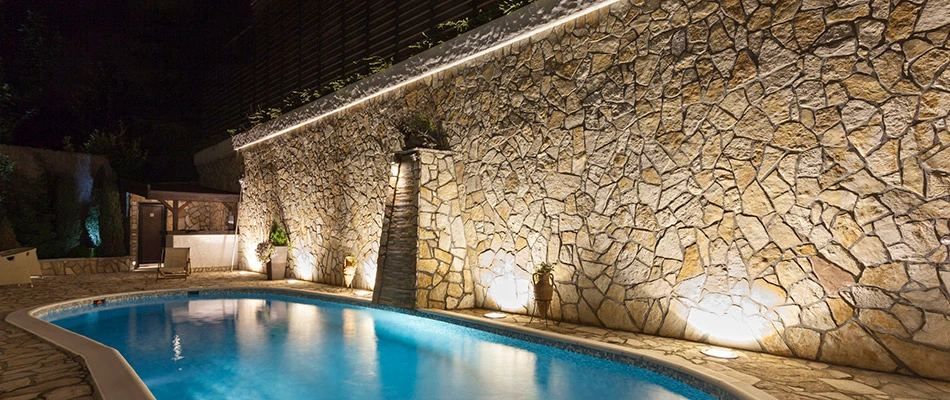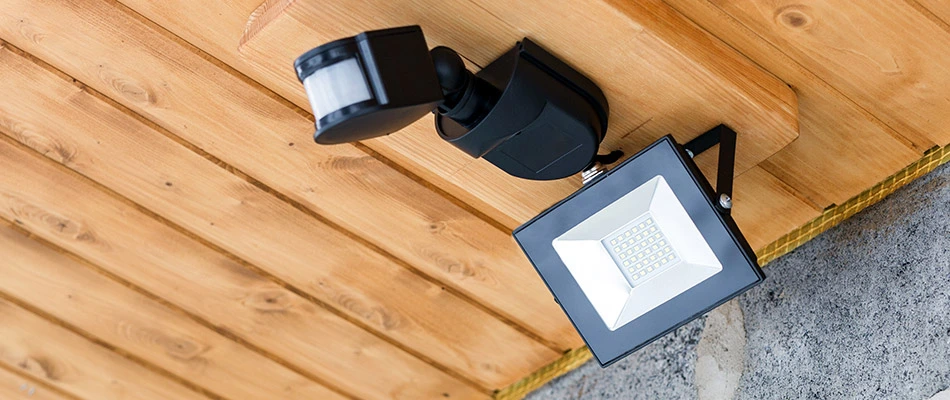Landscape lighting is a fantastic way to elevate your property's aesthetic. Lighting your outdoor space up in the dark of night can accentuate your home or commercial building, as well as any standout plants or structures you decorated your property with. There are many lighting techniques that we use here in Pennsylvania to increase your curb appeal, but these four lighting techniques can make a dramatic difference in how you and your neighbors view your property. Silhouette lighting can create a strong silhouette on any object in your yard. Wall grazing is used to accentuate natural textures on any surface. Wall washing, meanwhile, is perfect for emphasizing smooth surfaces. Lastly, moonlighting uses cool, white lights aimed towards the ground to imitate the moon casting its light on your landscape.
1. Silhouette Lighting

Silhouette lighting is an outdoor lighting technique you can utilize to elevate your nighttime landscape. Silhouette lighting, or uplighting, is a great way to emphasize specific plants or structures on your landscape at night. This lighting technique uses a backlight to create a bold silhouette of your desired object while also lighting up the surface behind it. This results in creating a strong dramatic visual that makes the silhouetted object stand out from others on your landscape.
2. Wall Grazing

Wall Grazing is another outdoor lighting technique that can be utilized to emphasize specific textures. Wall grazing is perfect to light up rough surfaces like stone, brick, or wood because it accentuates those natural textures. A light is placed at a sharp angle against the surface you want to light up. Because of this angle, the layered textures of those natural surfaces create small shadows against the lit-up surface which ends up creating a sense of depth to them while making their features easier to distinguish. Wall grazing is ideal for lighting up any structures or walls if it's made of any of the other rougher, natural textures mentioned previously.
3. Wall Washing

In practice, wall washing is like wall grazing since you’re directing light toward a wall to accentuate its features, however, there is one major difference to set this technique apart. If the key to wall grazing is setting the light close to a wall and aiming the light at a narrower angle, then to achieve a wall wash, you need to set the light further away from the wall at a wider angle. By moving the light further away from the wall and casting the light at a wider angle, you can now accentuate smooth surfaces. Because your lights are placed further away from the wall, they end up washing your wall in bright light, really emphasizing its smoothness and colors. This technique is perfect for making your home or commercial building stand out from the backdrop of the night.
4. Moonlighting

Moonlighting is a landscape lighting technique that casts a cool, white glow onto your landscape which mimics the moonlight. The lights are placed up high and aimed downwards to create this effect on your landscape. The key to effective moonlighting is subtlety. You want to make sure the light fixtures are placed in spots where they can't be easily seen. People's attention shouldn't be drawn to the light fixtures, but rather, to the calming light shining down on your landscape. Otherwise, you risk breaking the illusion it creates.
Moonlighting is also a great way to enhance safety and security since it brightens up your property!
Give us a call today to sign up for our landscape lighting service!
At Countywide Landscape, we utilize a variety of lighting techniques to create a custom landscape lighting system that can take your property to the next level. We service commercial, HOA, and residential properties in West Chester, Downingtown, Exton, PA, and nearby areas. Call us today at (610) 285-9727 to schedule our landscape lighting service.




Comments (0)
Thanks for your comment!
Thanks for your feedback! Your comments have been successfully submitted! Please note, all comments require admin approval prior to display.
Error submitting comment!
There is a problem with your comment, please see below and try again.